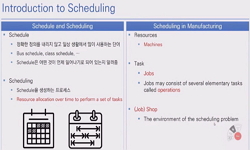A current autonomous vehicle determines its driving strategy by considering only external factors (Pedestrians, road conditions, etc.) without considering the interior condition of the vehicle. To solve the problem, this paper proposes “An Optimal D...
http://chineseinput.net/에서 pinyin(병음)방식으로 중국어를 변환할 수 있습니다.
변환된 중국어를 복사하여 사용하시면 됩니다.
- 中文 을 입력하시려면 zhongwen을 입력하시고 space를누르시면됩니다.
- 北京 을 입력하시려면 beijing을 입력하시고 space를 누르시면 됩니다.



An Optimal Driving Support Strategy(ODSS) for Autonomous Vehicles based on an Genetic Algorithm = An Optimal Driving Support Strategy(ODSS) for Autonomous Vehicles based on an Genetic Algorithm
한글로보기https://www.riss.kr/link?id=A106529191
- 저자
- 발행기관
- 학술지명
- 권호사항
-
발행연도
2019
-
작성언어
-
- 주제어
-
KDC
500
-
등재정보
SCIE,SCOPUS,KCI등재
-
자료형태
학술저널
- 발행기관 URL
-
수록면
5842-5861(20쪽)
- DOI식별코드
- 제공처
-
0
상세조회 -
0
다운로드
부가정보
다국어 초록 (Multilingual Abstract)
A current autonomous vehicle determines its driving strategy by considering only external factors (Pedestrians, road conditions, etc.) without considering the interior condition of the vehicle. To solve the problem, this paper proposes “An Optimal Driving Support Strategy(ODSS) based on an Genetic Algorithm for Autonomous Vehicles” which determines the optimal strategy of an autonomous vehicle by analyzing not only the external factors, but also the internal factors of the vehicle(consumable conditions, RPM levels etc.). The proposed ODSS consists of 4 modules. The first module is a Data Communication Module (DCM) which converts CAN, FlexRay, and HSCAN messages of vehicles into WAVE messages and sends the converted messages to the Cloud and receives the analyzed result from the Cloud using V2X. The second module is a Data Management Module (DMM) that classifies the converted WAVE messages and stores the classified messages in a road state table, a sensor message table, and a vehicle state table. The third module is a Data Analysis Module (DAM) which learns a genetic algorithm using sensor data from vehicles stored in the cloud and determines the optimal driving strategy of an autonomous vehicle. The fourth module is a Data Visualization Module (DVM) which displays the optimal driving strategy and the current driving conditions on a vehicle monitor. This paper compared the DCM with existing vehicle gateways and the DAM with the MLP and RF neural network models to validate the ODSS. In the experiment, the DCM improved a loss rate approximately by 5%, compared with existing vehicle gateways. In addition, because the DAM improved computation time by 40% and 20% separately, compared with the MLP and RF, it determined RPM, speed, steering angle and lane changes faster than them.
동일학술지(권/호) 다른 논문
-
- 한국인터넷정보학회
- ( Tan-phuoc Huynh )
- 2019
- SCIE,SCOPUS,KCI등재
-
ValueRank: Keyword Search of Object Summaries Considering Values
- 한국인터넷정보학회
- ( Cai Zhi )
- 2019
- SCIE,SCOPUS,KCI등재
-
An Efficient Artificial Intelligence Hybrid Approach for Energy Management in Intelligent Buildings
- 한국인터넷정보학회
- ( Fazli Wahid )
- 2019
- SCIE,SCOPUS,KCI등재
-
Efficient routing in multicast mesh by using forwarding nodes and weighted cost function
- 한국인터넷정보학회
- ( Kapila Vyas )
- 2019
- SCIE,SCOPUS,KCI등재




 ScienceON
ScienceON KISS
KISS



